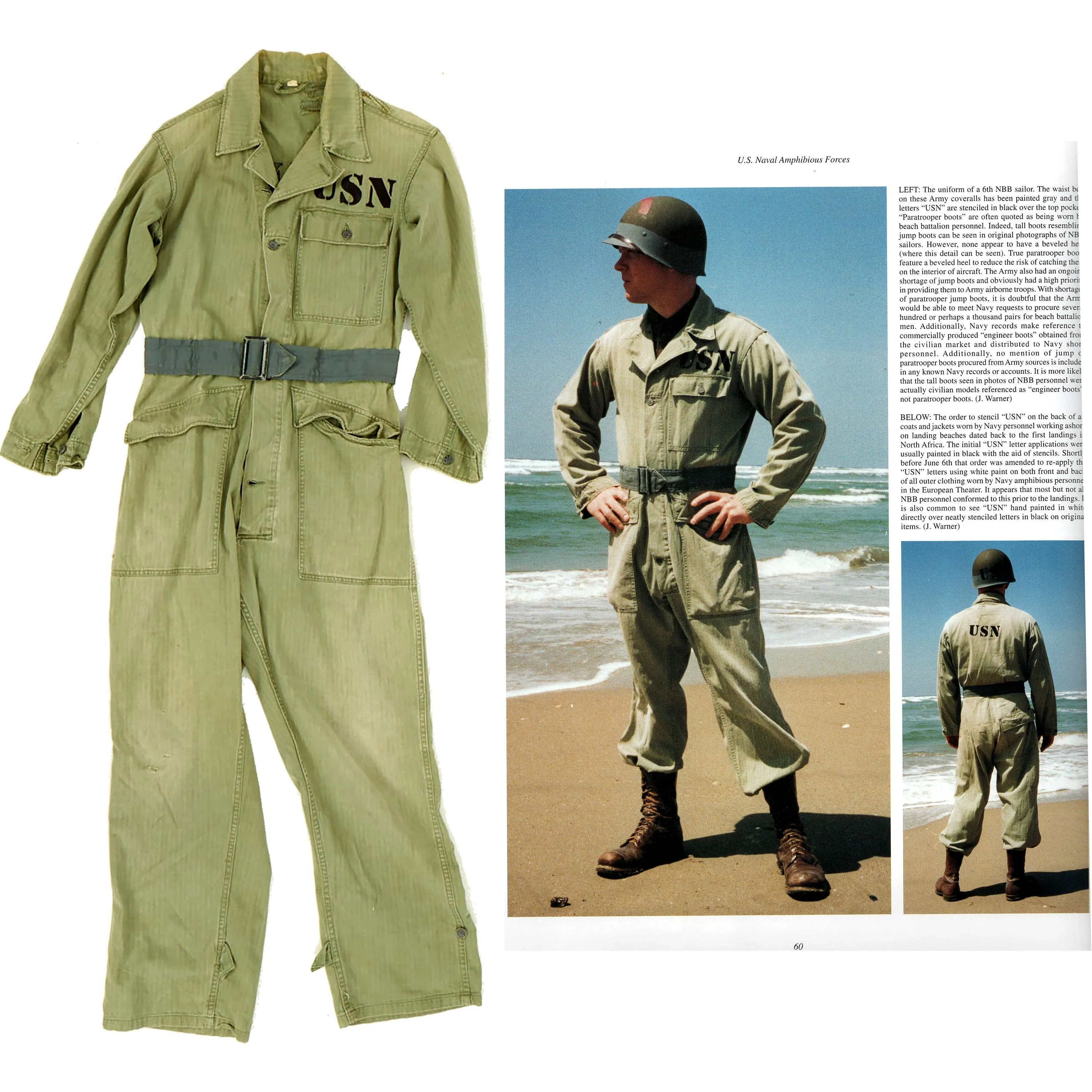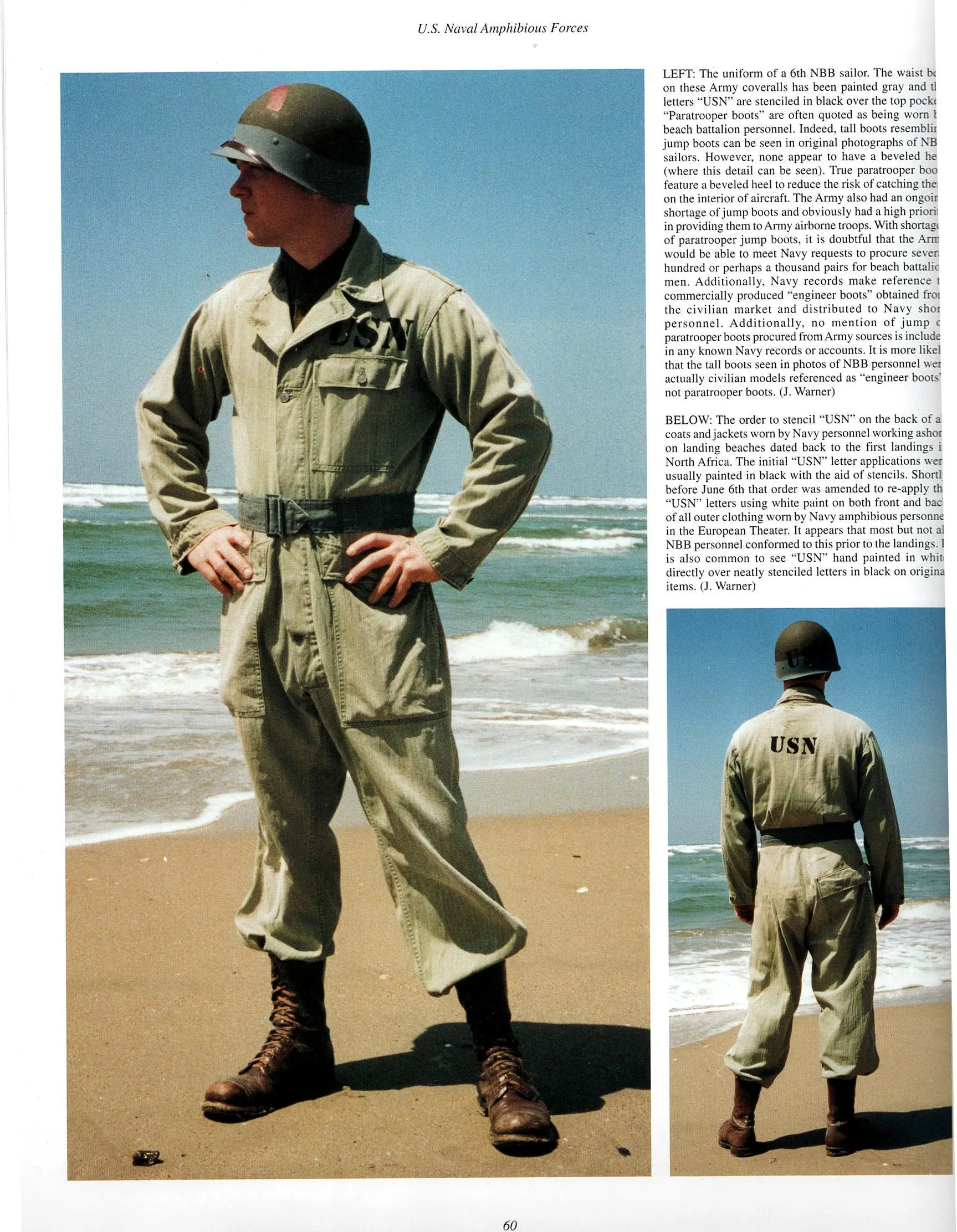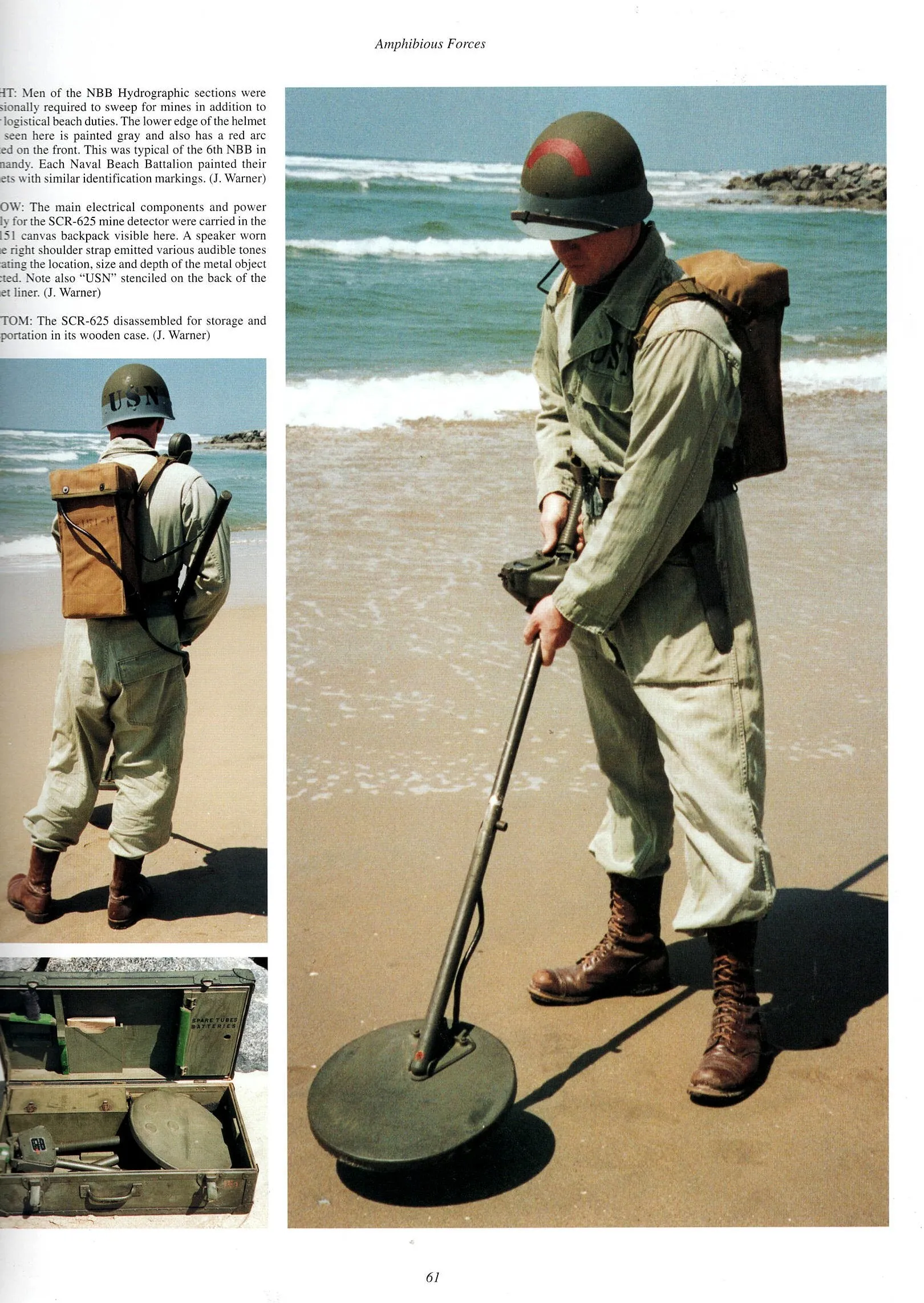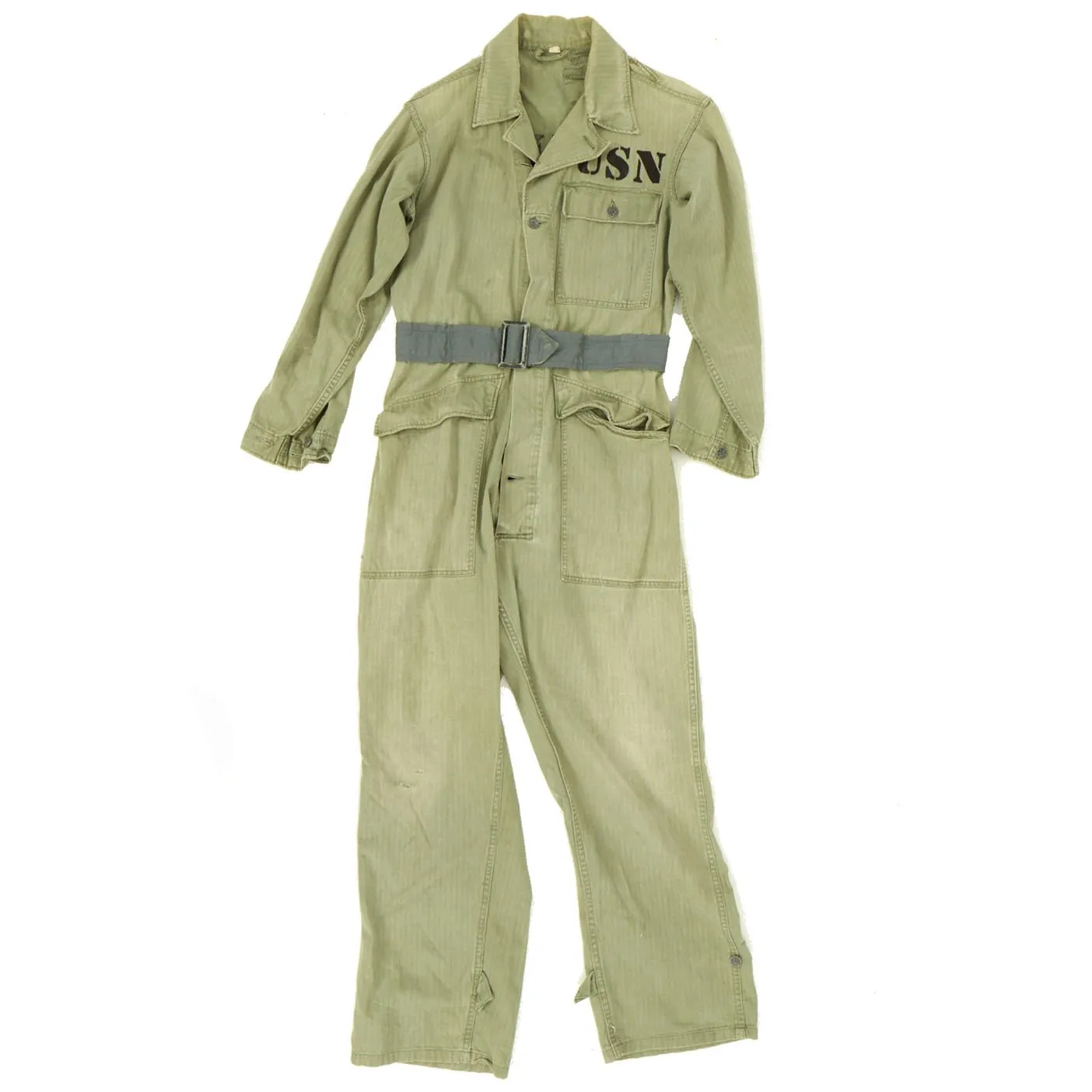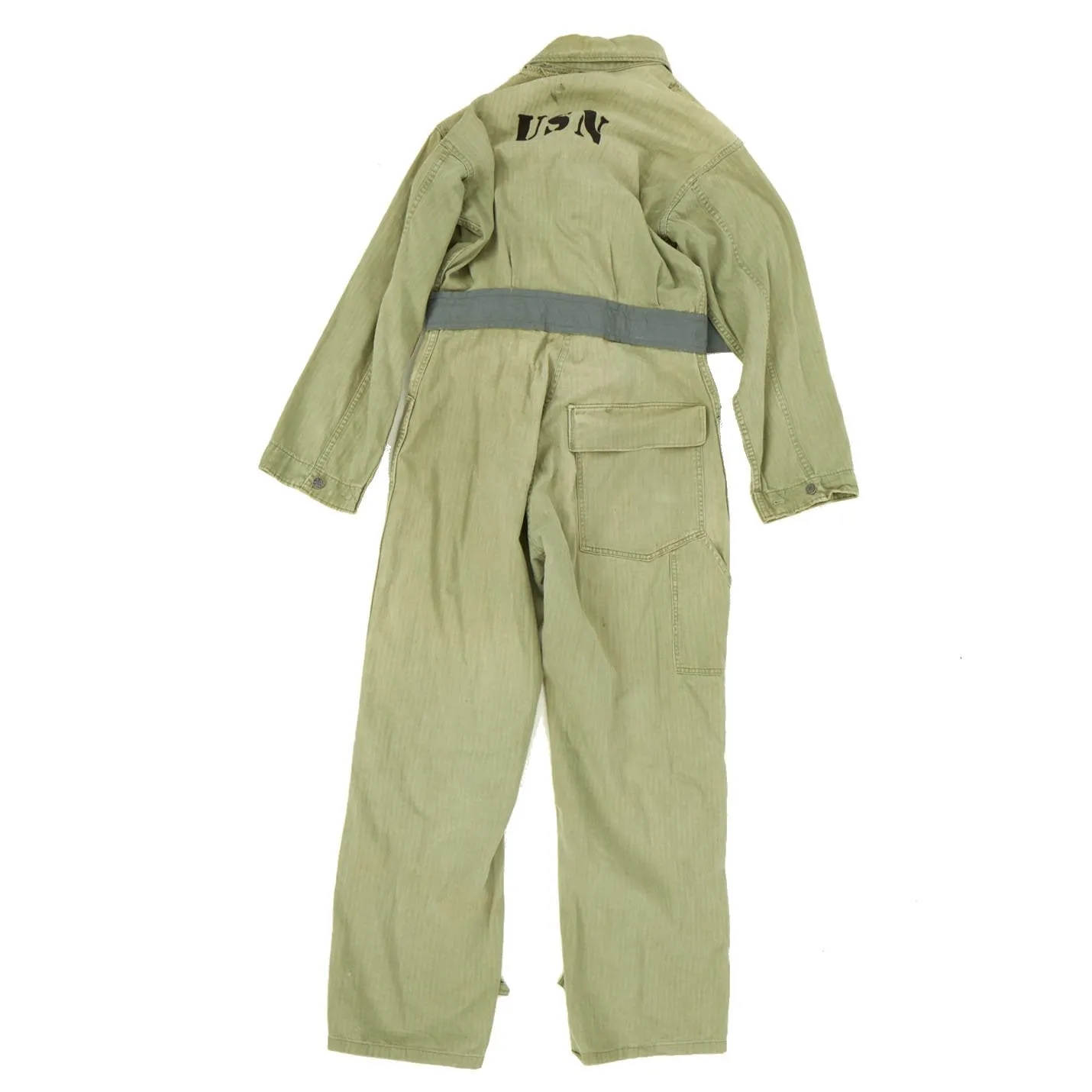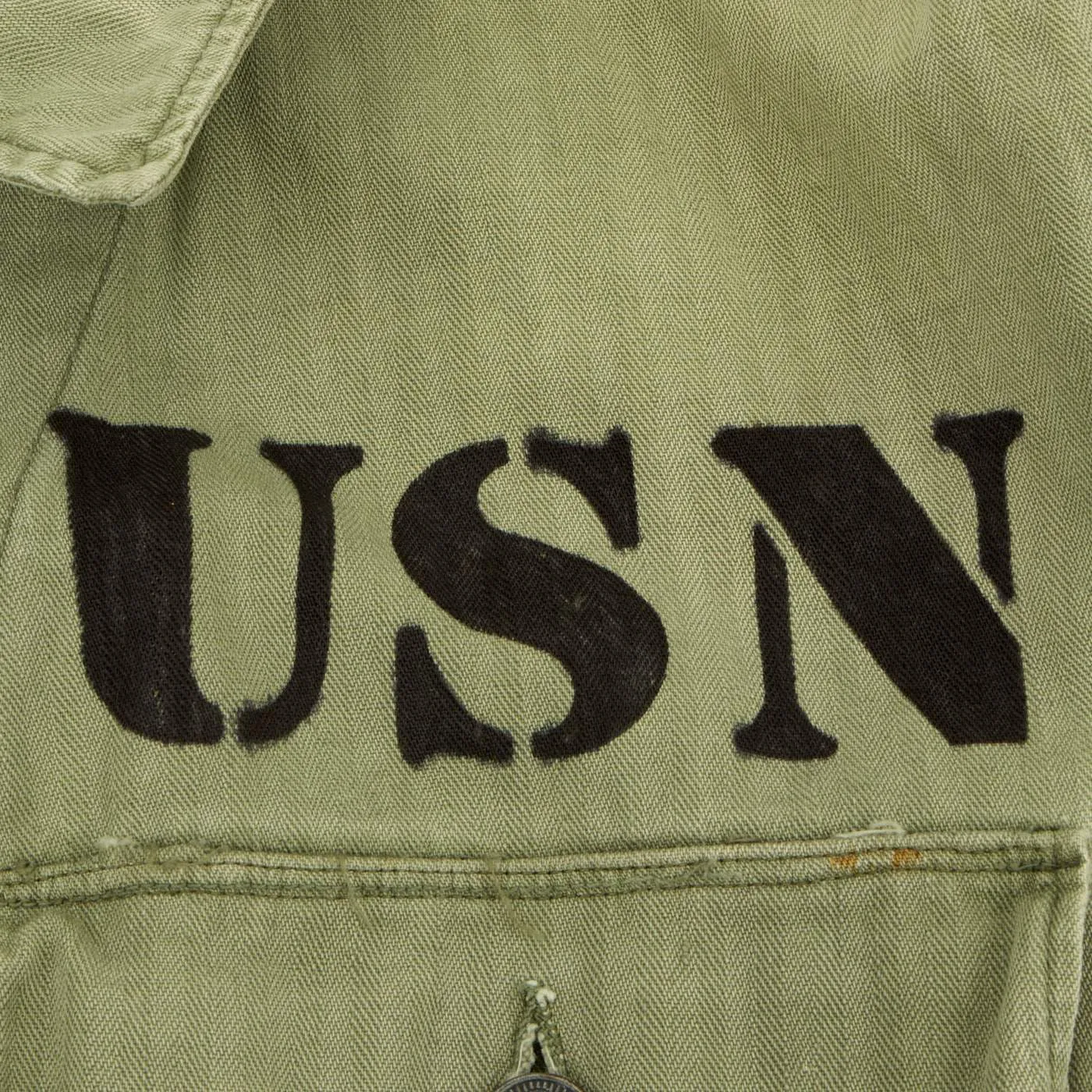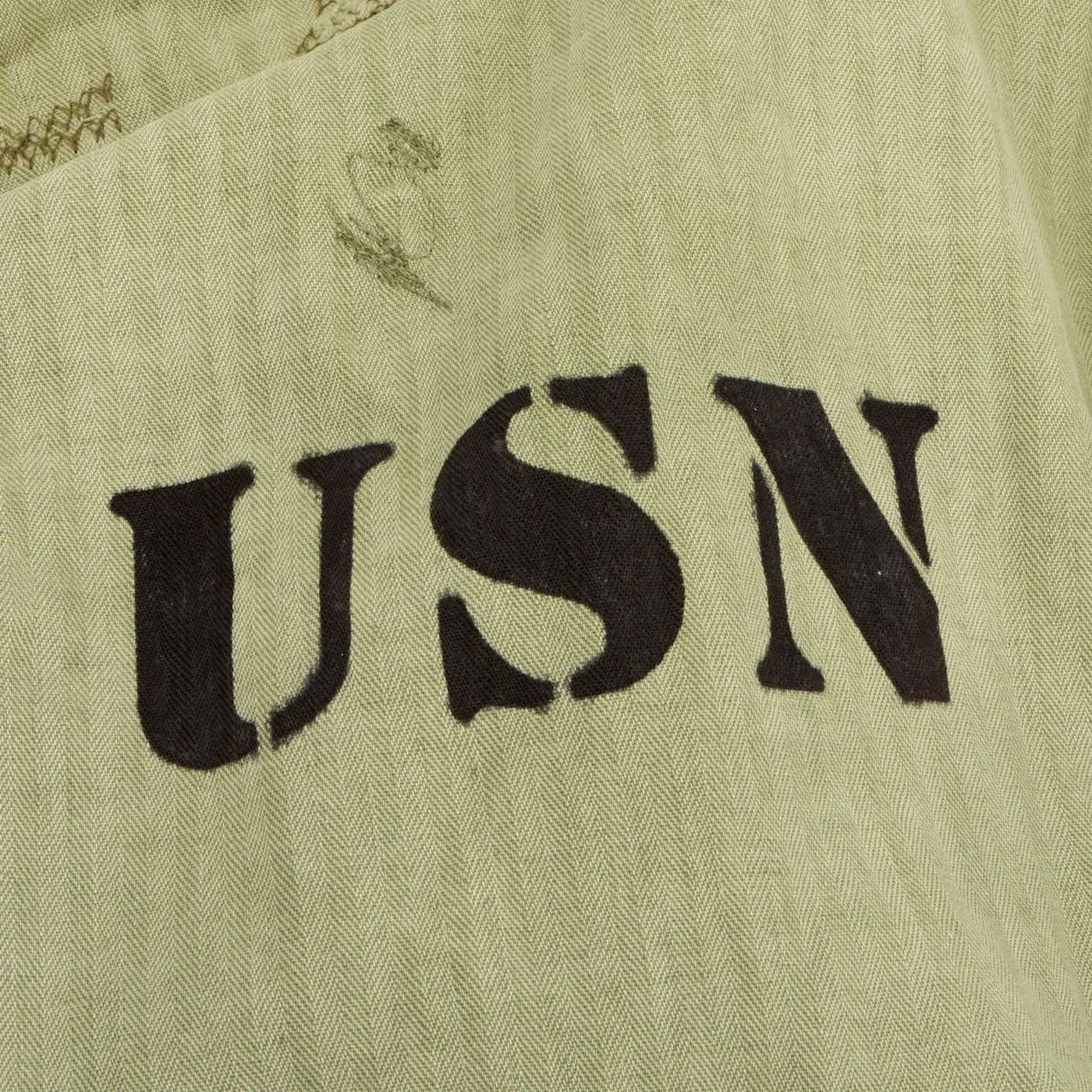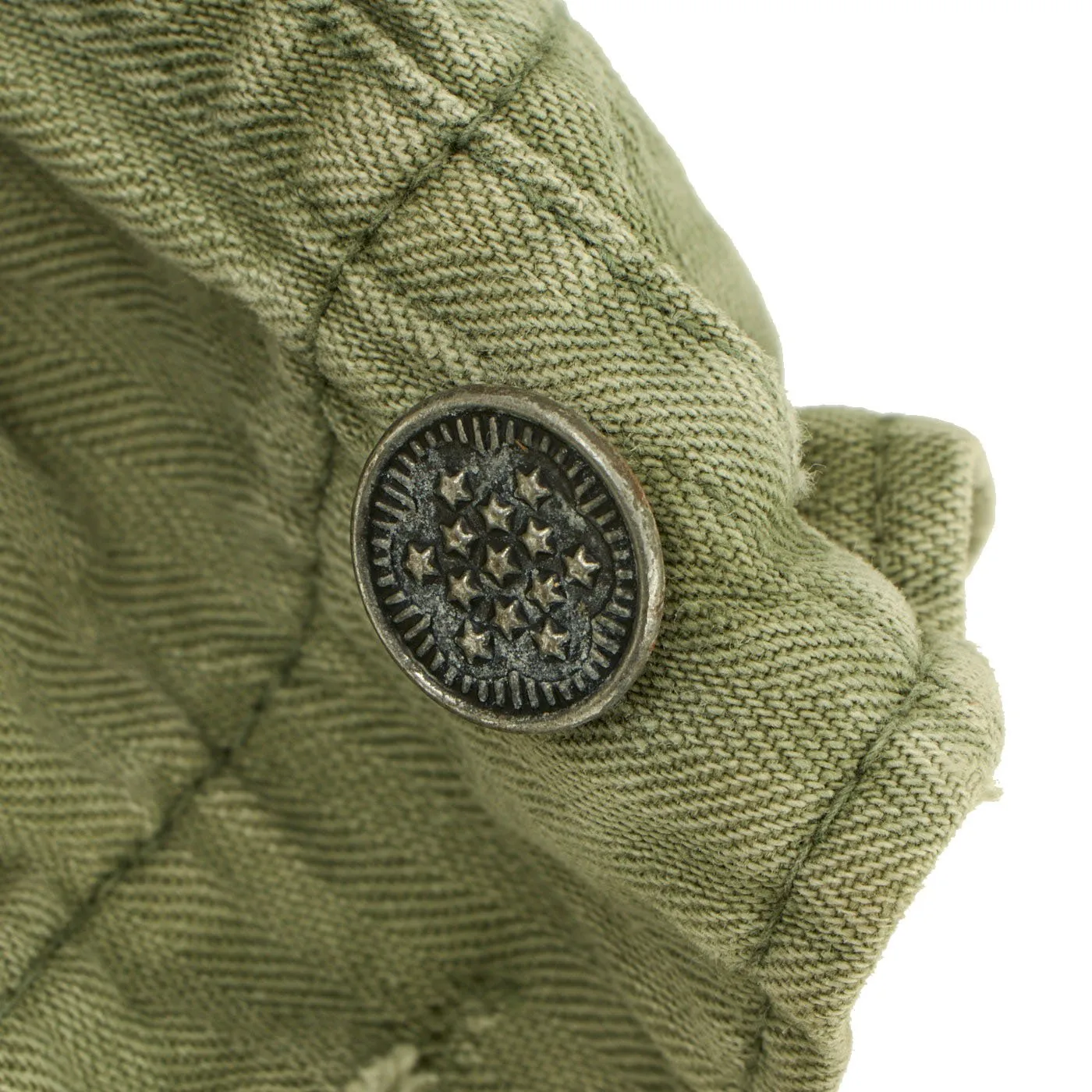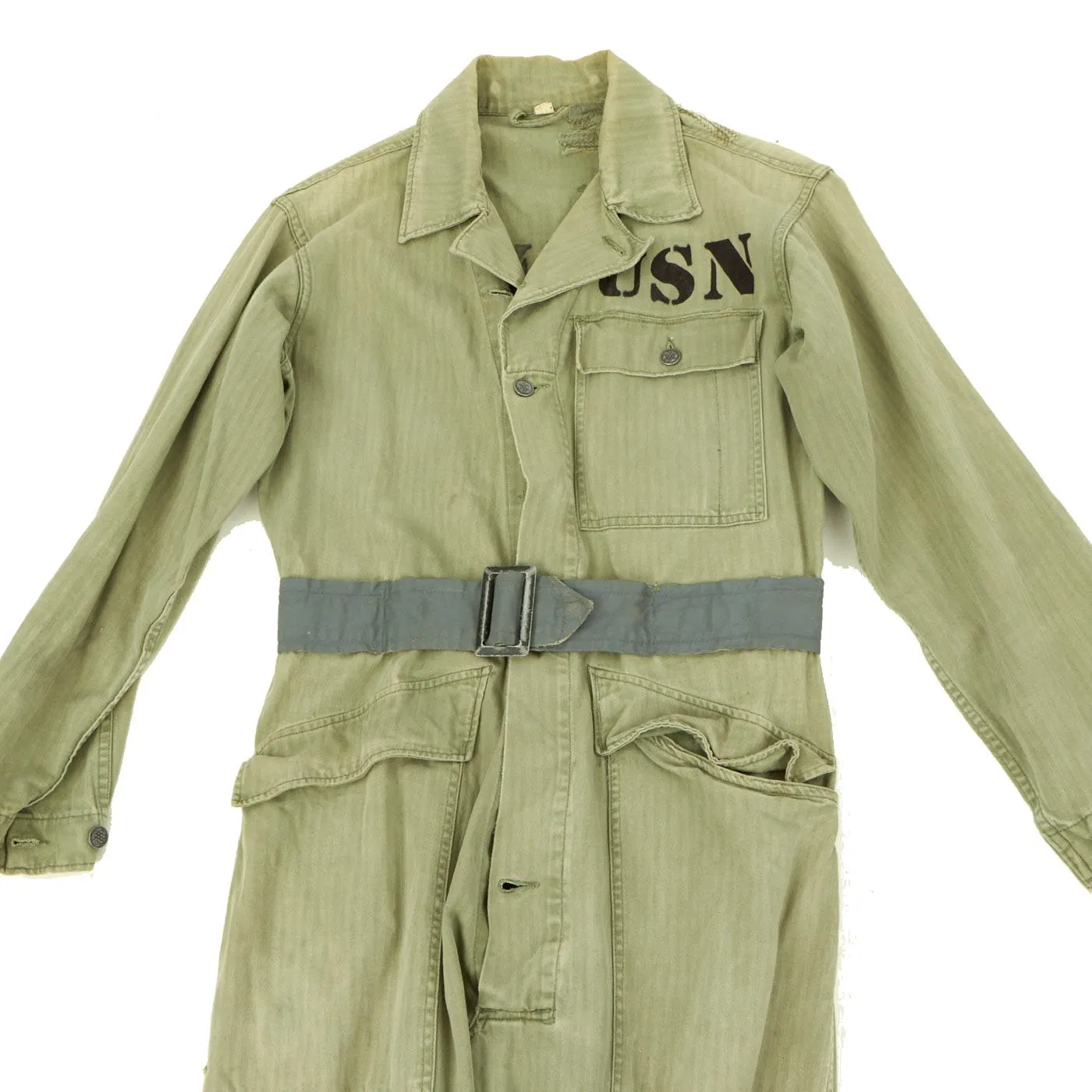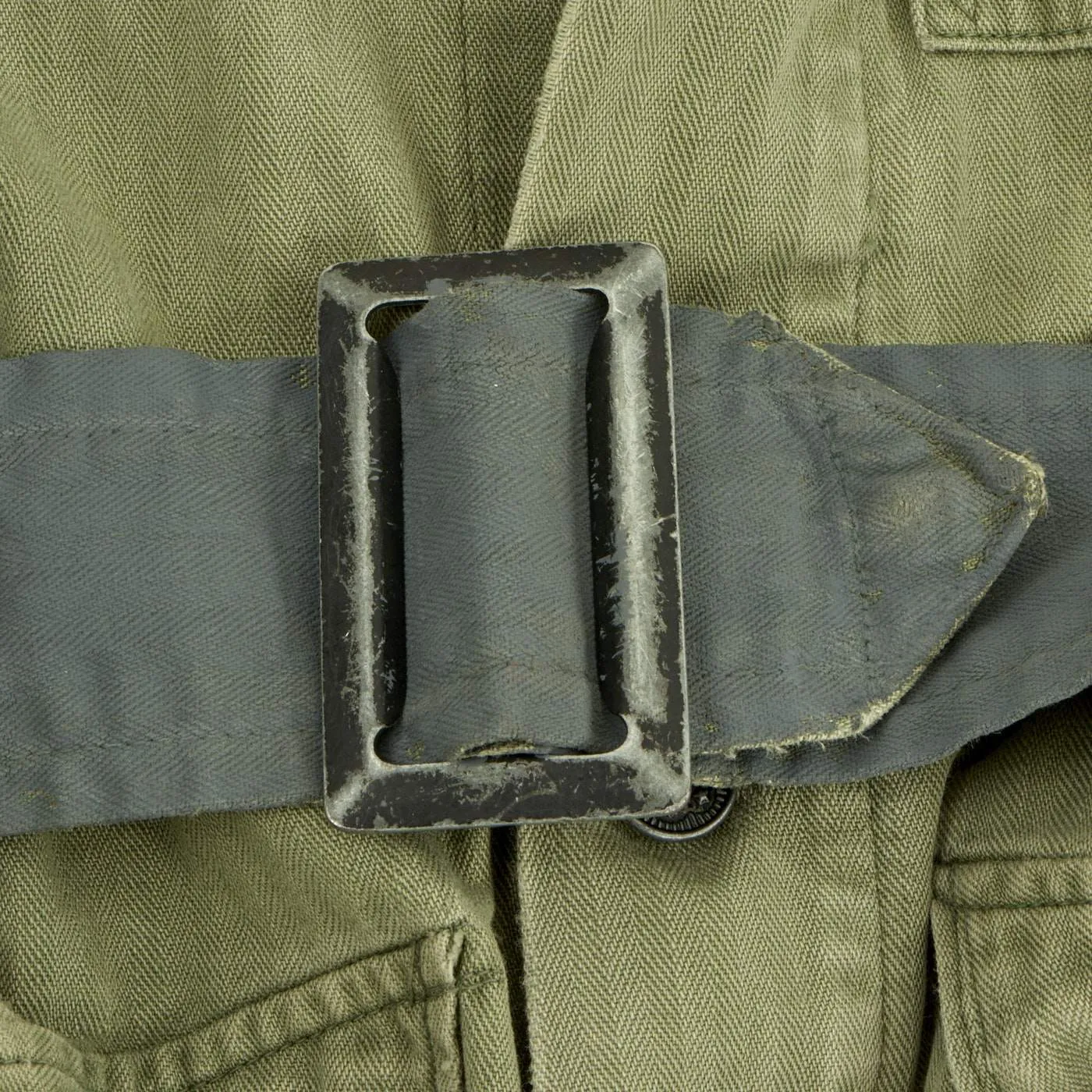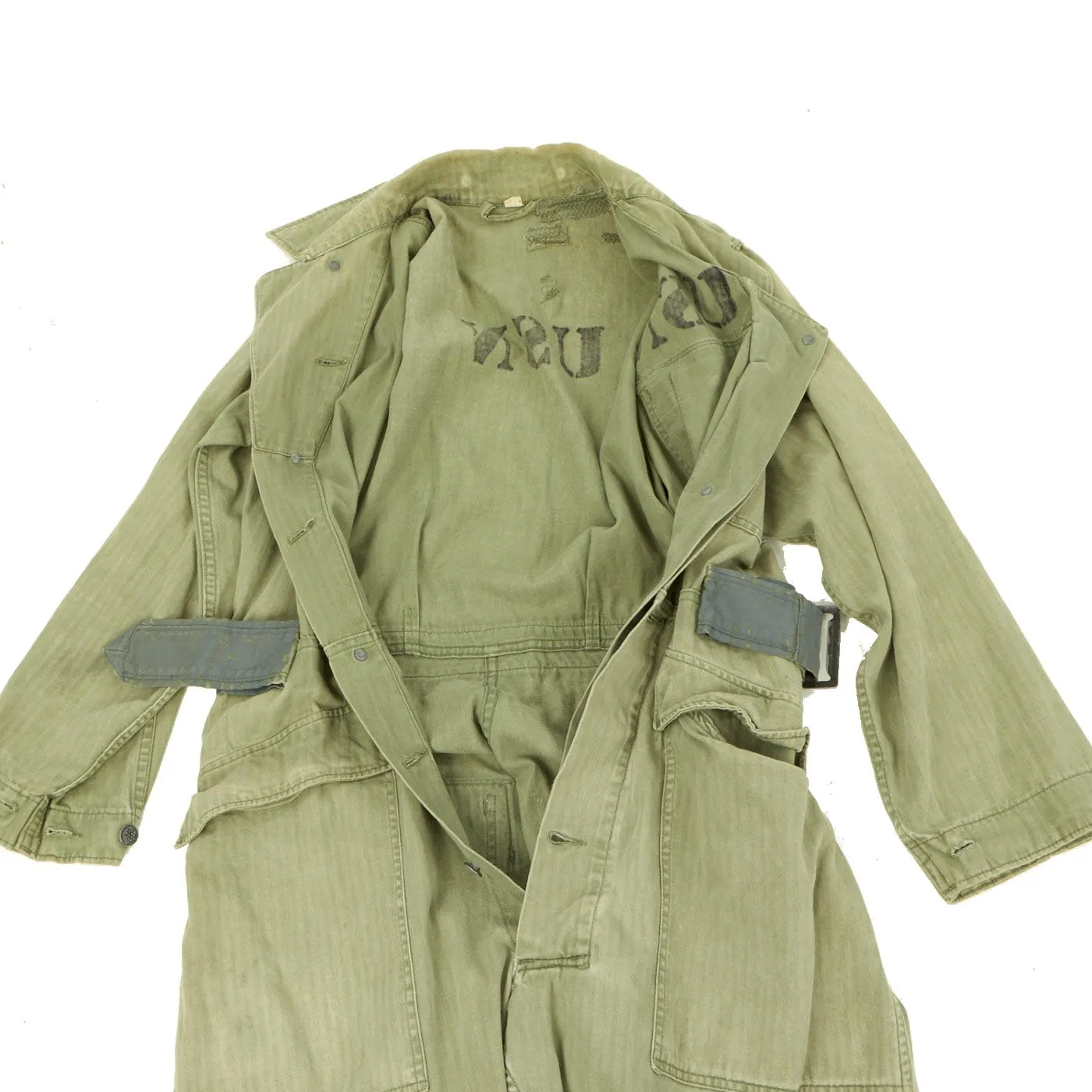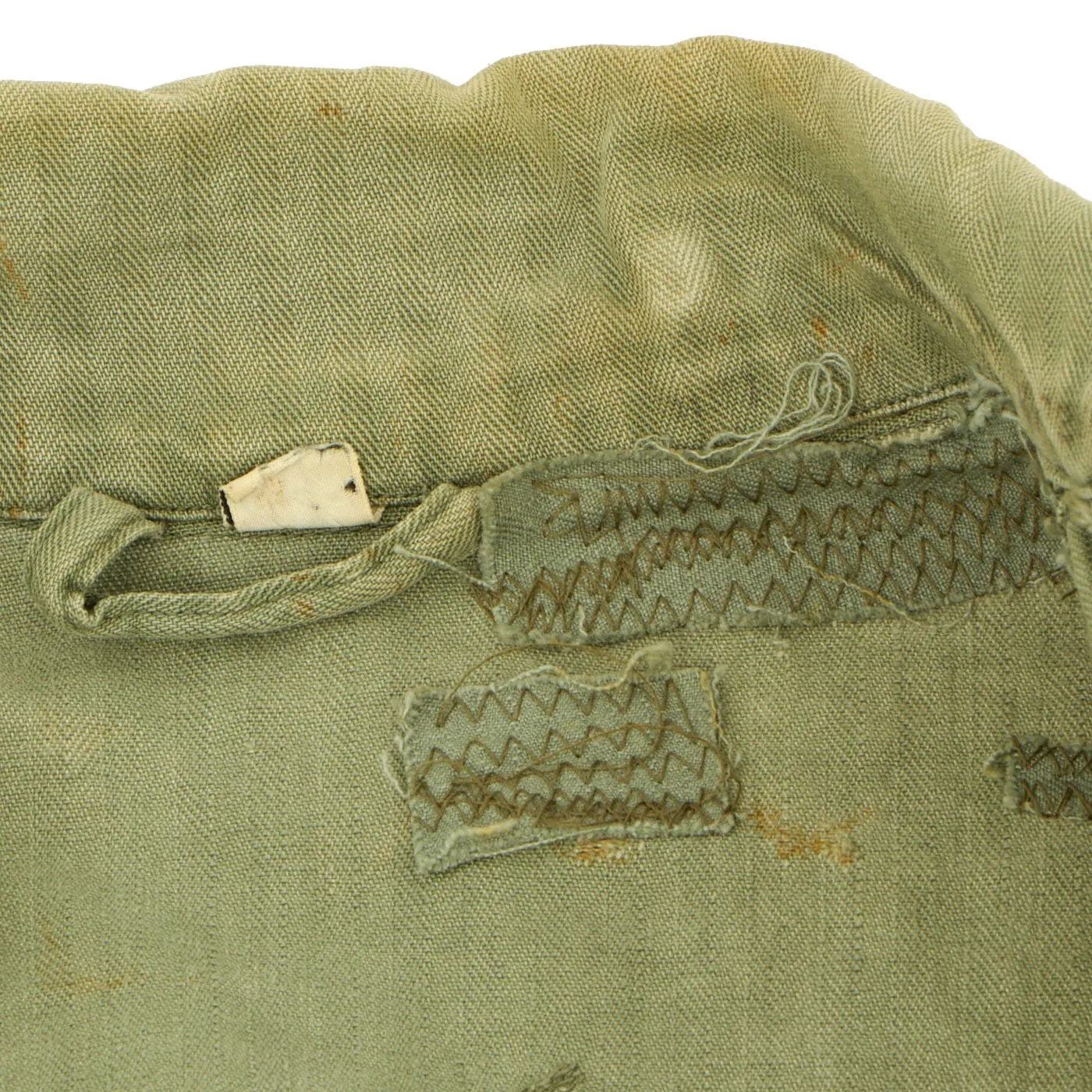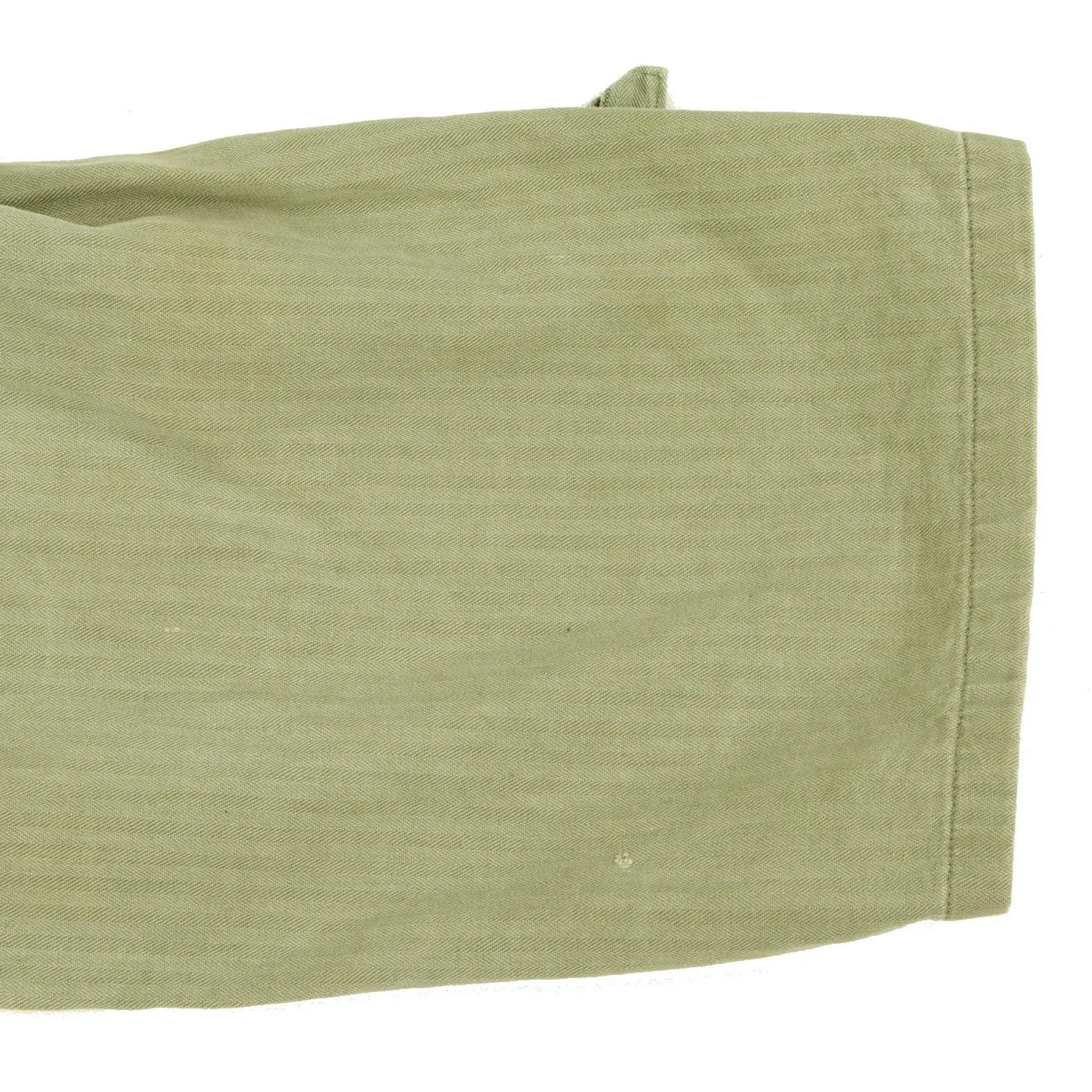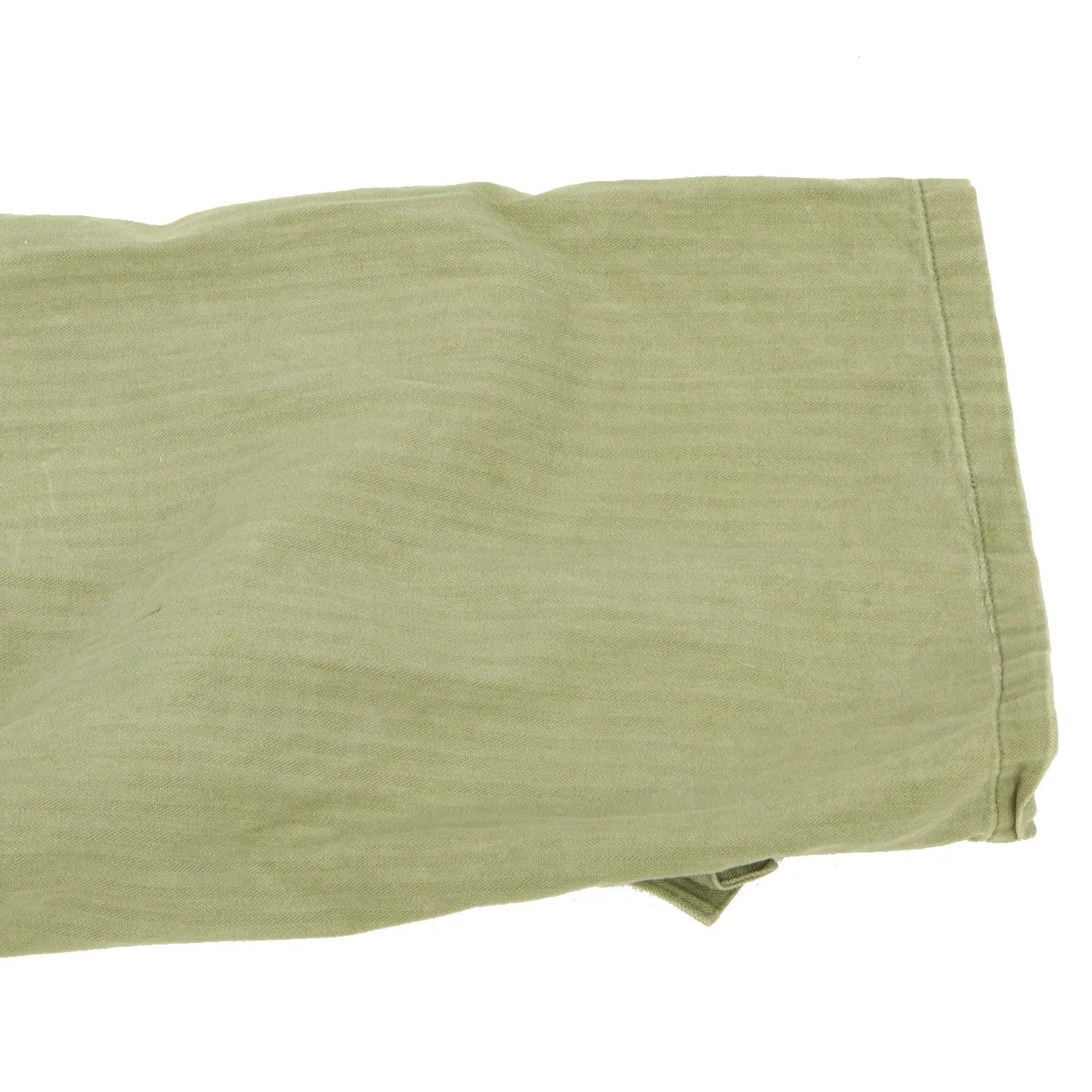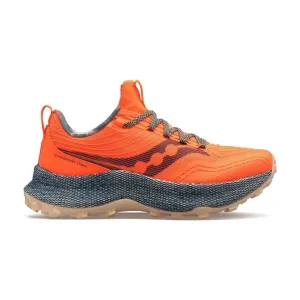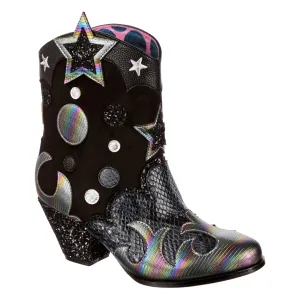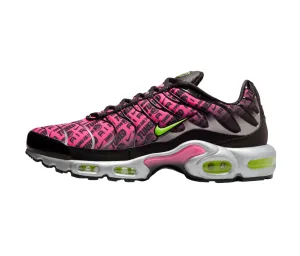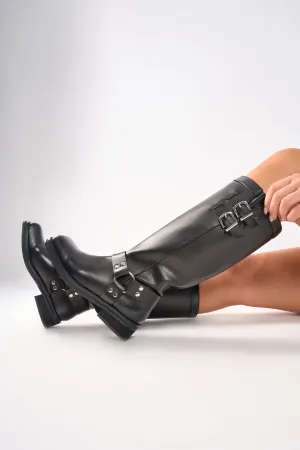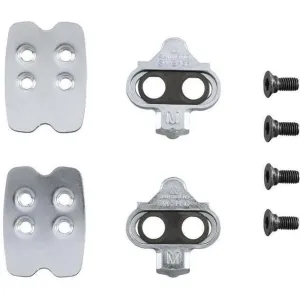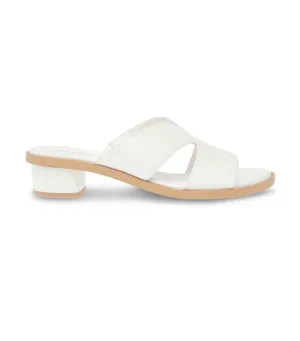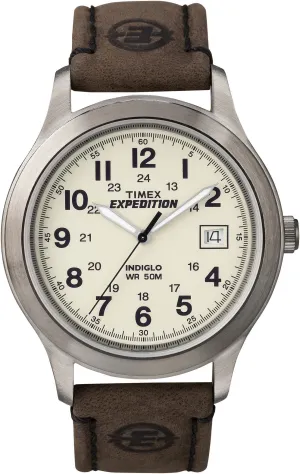Original Items: Only One Set Available. This very set of coveralls is featured on pages 60-61 in the book U. S. Navy Uniforms in World War II Series: U. S. Naval Amphibious Forces, Volume 3 by Jeff Warner. In fact this set was purchased by IMA from the estate of Mr. Warner along with much of his personal collection.
Wonderful condition 6th Naval Beach Battalion Painted Cotton Coveralls as used by Navy personnel working ashore during World War Two. Features a wonderful black painted stencil USN to the front right chest.
Approximate Measurements:
Collar to Shoulder: 11"
Shoulder to Sleeve: 23"
Shoulder to Shoulder: 18"
Chest width: 21"
Waist width: 17"
Hip width: 25"
Front length: 63.5"
The 6th Naval Beach Battalion was commissioned 9 October 1943 under the command of Eugene C. Carusi, USNR, an Annapolis graduate and Washington D.C. attorney. The Battalion was formed in July and trained exclusively for OVERLORD, the Allied permanent re-entry into Continental Europe.
Upon arrival at Camp Bradford, VA in July 1943, personnel were assigned to one of four sections: communications, hydrographic, boat repair or medical. As training progressed, these Navy specialists began to resemble an Army battalion, broken into three companies and nine platoons. Each platoon had a medical doctor and was headed by a Beachmaster and his assistant.
WWII Naval Beach Battalions were indistinguishable from Army assault troops. While training at Fort Pierce, these Navy amphibians wore coveralls, field shoes, life belts, gas masks, leather gloves and full packs with rifles slung over their shoulders, engaging in joint maneuvers with the Army off the coast of Florida. Having been issued Thompson submachine guns and wearing steel helmets with a sky blue "6" (later a red arc) painted on the front, the 6th Naval Beach Battalion appeared more like soldiers than sailors.
The nine Navy doctors of the Battalion were issued Colt 45s and then reassured by instructors that in the event their shots ever missed their mark during combat on the beach, they would at least have the pistol to throw at the enemy! The Army counterparts of the USN beach battalions were amphibious engineers. Dr. Ralph Hall, a recent graduate of Syracuse Medical School, wrote to his pregnant wife that he "joined the Navy to get out of the Army. The army boys that are here joined the Army and are headed to go to sea and fight from boats. All is very ironical."
On 7 January 1944, after six months of intensive amphibious warfare training at Fort Pierce and Camp Bradford, the Battalion traveled overseas on the SS Mauritania to the UK in preparation for the invasion of Normandy.
Training continued in Swansea Wales and the 6th Beach Battalion was attached to the 5th Engineer Special Brigade 12 April 1944 in order to achieve a closer coordination between the Navy afloat and the Army ashore during the invasion landings. In support of the 16th Regimental Combat Team, 1st Infantry Division, Commander Carusi's amphibious unit had the mission of providing battlefield medicine, establishing shore-to-ship communications, marking sea lanes, making emergency boat repairs, assisting in the removal of underwater obstructions, directing the landings and evacuating the casualties in the eastern Omaha Beach sectors code-named Easy Red, Fox Green and Fox Red.
With a total strength of 42 officers and 362 enlisted men, Battalion elements were attached for the 6 June 1944 cross-Channel attack as follows:
Company A - 336th Engineer Combat Battalion
Company B - 348th Engineer Combat Battalion
Company C - 37th Engineer Combat Battalion
Battalion Headquarters - to land with C-8 platoon and
37th Engineer Combat Battalion

 Cart(
Cart(